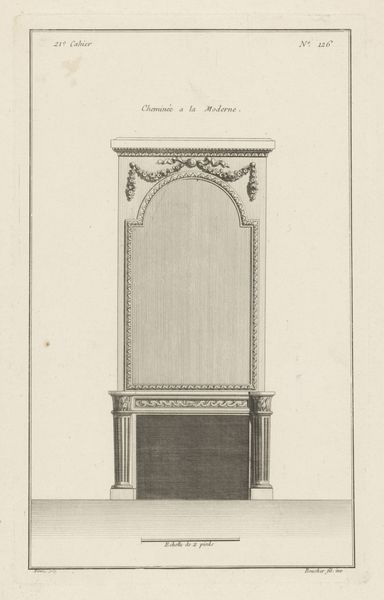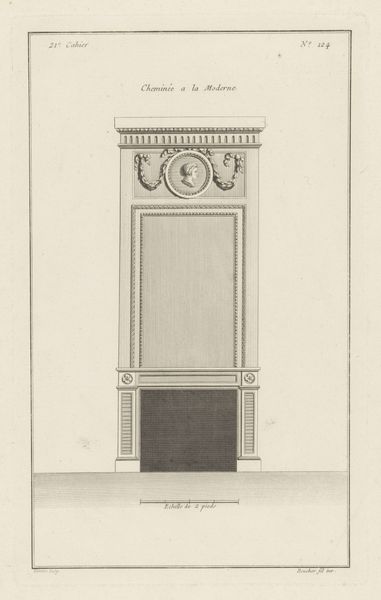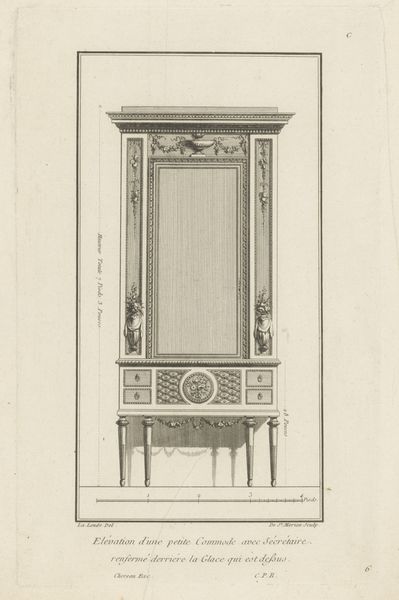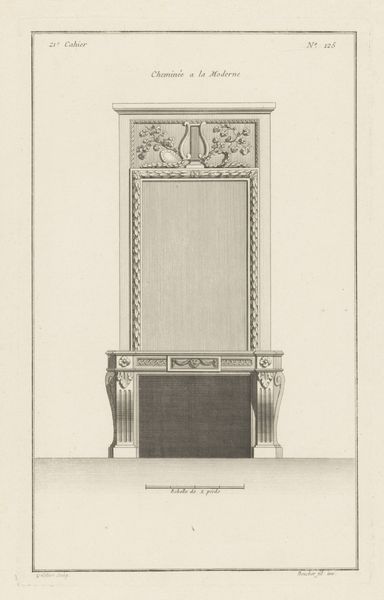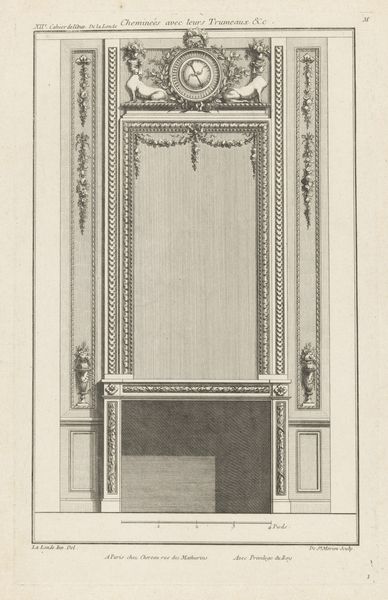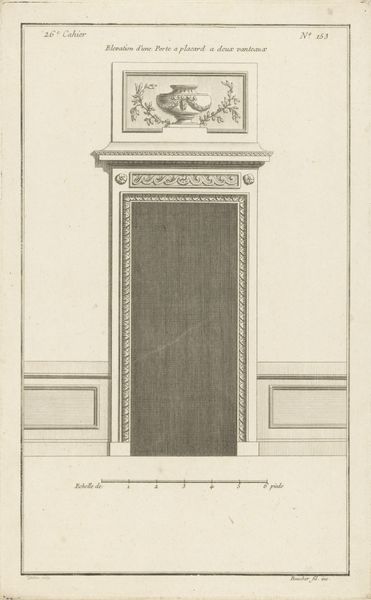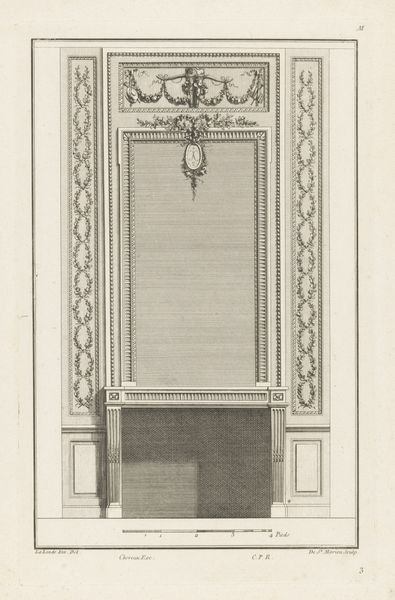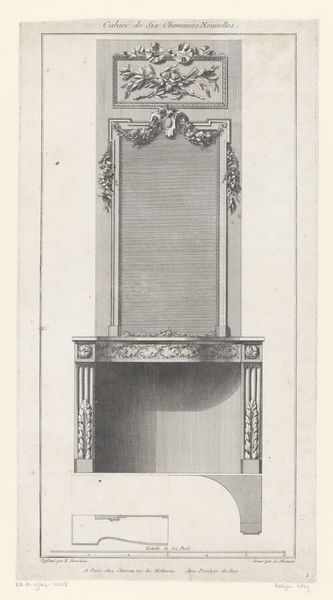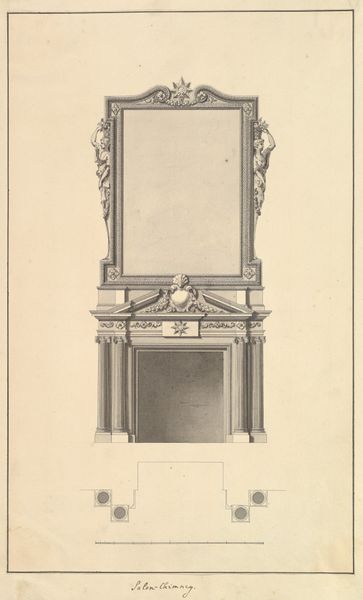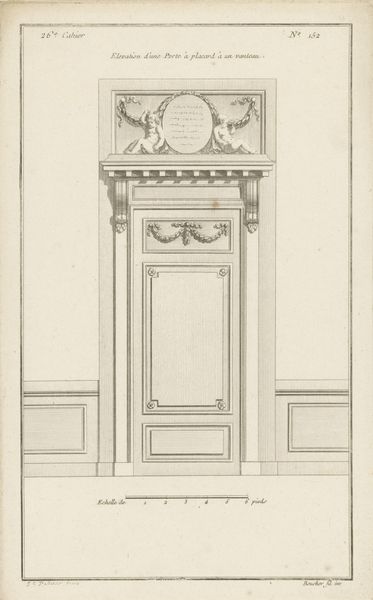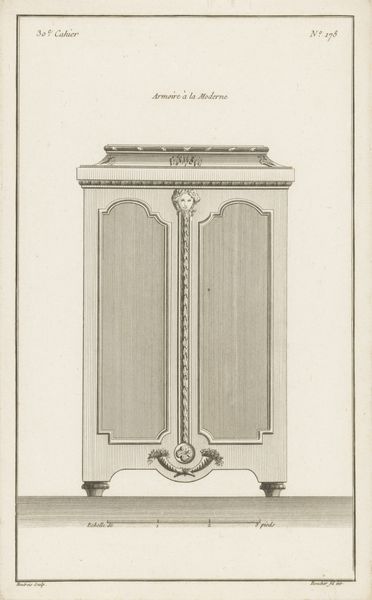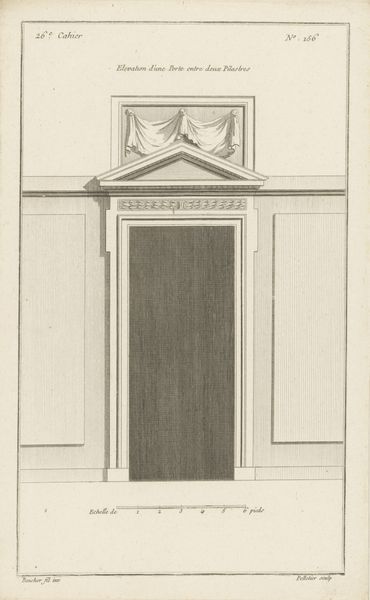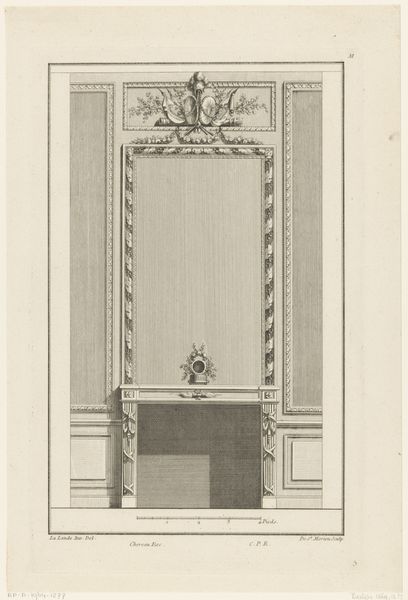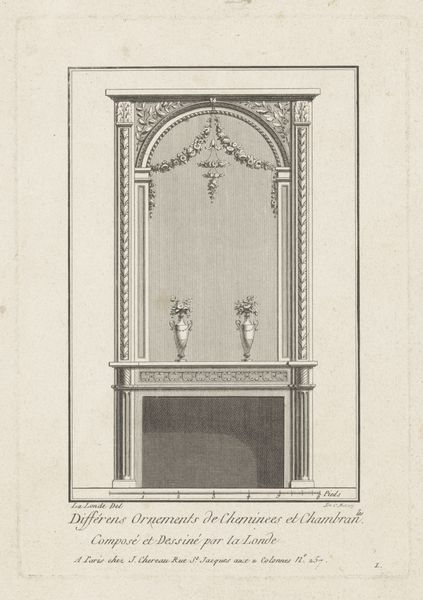
drawing, engraving, architecture
#
drawing
#
neoclacissism
#
line
#
engraving
#
architecture
Dimensions: height 326 mm, width 203 mm
Copyright: Rijks Museum: Open Domain
Editor: Here we have "Schouw met rookvat," or "Mantelpiece with Incense Burner," an engraving by Jean Pelletier, dating back to between 1772 and 1779. It's a study in neoclassical symmetry, all precise lines and balanced forms. But there's also a curious emptiness within the arch. How do you interpret this absence, especially within the context of Neoclassicism? Curator: That emptiness is indeed compelling. Neoclassicism, as you know, was heavily invested in ideas of civic virtue and public morality. These designs for the wealthy served not just as decoration but also as demonstrations of refined taste and social standing. What does a fireplace signify socially? Editor: Well, warmth, gathering…a focal point of the home. Maybe the emptiness is a comment on a superficial display, a void where true warmth should be? Curator: That’s perceptive. The visual language is rooted in antiquity, evoking ideals of the Roman Republic and Empire. The fireplace then, in this context, transforms from a symbol of domestic comfort to one of inherited social power. It’s also worth noting how these designs circulate; engravings like these allowed these architectural ideas to permeate society, standardizing ideals of good taste but also reinforcing social hierarchies. Do you think its audience fully grasped that implication at the time? Editor: That's a good question; probably some but not all, right? Looking at it that way, the emptiness almost suggests the hollowness of mimicking those values just for show. I didn't think about it like that before! Curator: Exactly! These are artifacts of cultural production and are so deeply embedded with intention. I would ask people to look at the intent of institutions when considering art.
Comments
No comments
Be the first to comment and join the conversation on the ultimate creative platform.
